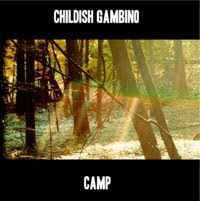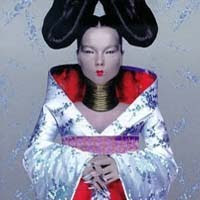How do we perceive jerks who act out in the music industry after it becomes out to the public? The answer for this comes down to whether we as music listeners should have our opinions about an individual making music inform our opinions about the music itself. Take the case of Chris Brown, who is not just a simple musician, but occupies a place in the public eye as a celebrity/entertainer. He has more of an obligation to not act like an idiot for fear of people placing opinions on the music before hearing it. MIA’s bleed into mainstream with her middle finger erected to a nearby camera during the Super Bowl's half-time caused a stir, to say the least. People who don't understand how powerfully motivating and enthralling she is on an activist stand-point, now believe she is from the hood and spends all her nights involved in wild crimes. Conversely, concerning the front-man of Surfer Blood, the reactions are going to be less intense because there isn’t as much of public attention on him. I would not be surprised if the reaction against Surfer Blood’s music in the future would definitely, if not entirely, summon negative opinions.
Why don’t we see this kind of coverage all the time from the independent music industry? Is it because it’s not really happening, or indie bands are better at keeping it on the hush-hush, or there isn’t all that much money or interest in that kind of thing? The media of music, especially independent music, tends to glamourize, not necessarily the rock-n-roll lifestyle, but the lifestyle of the tortured artist, and sometimes drug abuse and general asshole behaviour entwines with that environment. However, domestic abuse, or even murder, most certainly does not make anyone seem like a sympathetic character. Both of those actions go well beyond the idea of what’s considered asshole behaviour as opposed to totally unacceptable behaviour.
In the television and radio age, the news was generally the same over a long period of time, but in the internet age I feel that things can snowball much faster. In today’s age, a piece of information doesn’t necessarily need to be leaked by a news organization that may or may not strategically think of how it must be delivered. Someone may have a piece of information and throws it out there into the cyber world whether or not he/she thinks it’s 100% accurate. Similarly, pretty much all the accusations of sexual abuse being committed by black metal band Xibalba, are being done online (screenshots of text messages, posts from the alleged victim and the band themselves). The hardcore scene in general is notorious for stirring up such strong emotion in any direction. What reaction will be expressed depends on what piece of information is leaked first. Another situation of something seedy—but also with information that was leaked first to the people in the opposite direction—is the situation Lamb of God is going through right now. The lead singer has been accused of murder while they were overseas on tour, and most of the reception over here has been pretty supportive toward the band from their fans.
This whole predicament calls to mind a zine that I heard was being created online called It’s Complicated: Feminists Write About the Misogynist Art We Love. Essentially, a group of feminist writers examine a collection of art that they believe is really great, but have problems with it because they are feminists. A lot of this is about music. Questioning is an important aspect because I don’t feel it’s fair to discount art soley because you have a problem with the artist. Nonetheless, I think it’s still important to recognize that there’s some kind of philosophical disconnect between you and the music you're listening to. It’s important to recognize the creator of art who is being talked about or experienced because that can often provide insight into the ways in which music should be appreciated.
Kanye West has obviously undergone asshole-type episodes, such as the Taylor Swift incident, but makes music where he acknowledges his idiotic, egotistic, sex-craving personality; especially on his latest album, My Beautiful Dark Twisted Fantasy. West is the quintessential example of assholes, but he’s so self-aware of that, and to me, that is one of the reasons why My Beautiful Dark Twisted Fantasy is at least an important album, if not a great album. He provokes the idea that you can make music that is opulent, grandiose and so thoroughly expressing certain qualities of your personae. Simultaneously, West speaks to this awareness, saying that what he’s doing with his music is obnoxious.
Odd Future is another example of kids who rap about ideas and actions, yet they’re not necessarily doing it. While a psychedelic drone band, Cave, can sing about very disgustingly heinous acts and be considered artful and accepted, rappers Tyler, The Creator or Earl Sweatshirt raps about rape and they’re assumed rapists. Many negative opinions about the members of Odd Future are not informed by the lyrical content, but more informed by the ways in which people in the collective present themselves. That to me constitutes obnoxious behavior—maybe even asshole behaviour—but not “terrible-person” behaviour.
There are numerous people who do asshole things in the music industry. There are numerous people who just have asshole personalities in music industry. However, in my opinion, I don’t feel like that necessarily means that you have to hate their music. Art is supposed to be a stand-alone of undefined, genderless, omnipresent and unapologetic creations—let's try to keep it that way.







